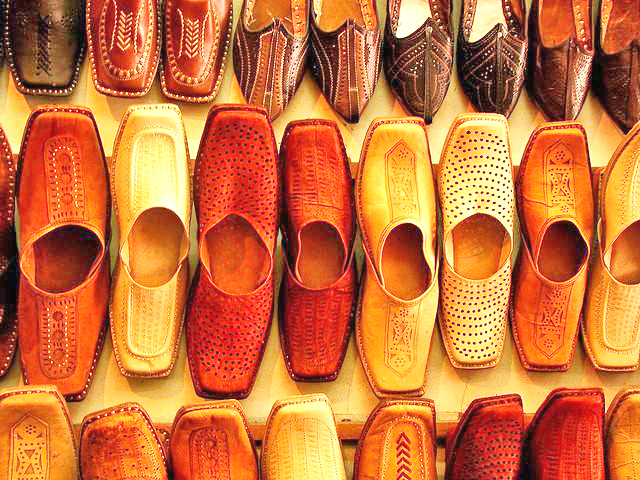Introduction
Nestled in the vibrant tapestry of Rajasthan’s rich cultural heritage lies a craft that has stood the test of time – Rajasthani Leatherware. Beyond the resplendent palaces and colorful turbans, the state’s artisans have perfected the art of transforming raw leather into exquisite, handcrafted treasures, each piece narrating a story of tradition, skill, and innovation.
Artistic Roots
Rajasthani leather craft boasts a lineage that traces back centuries, deeply rooted in the cultural and historical fabric of the region. Influenced by the royal patronage of the Maharajas and the nomadic lifestyles of various communities, the craft evolved into a harmonious blend of functionality and aesthetics.
Leather Varieties
The artisans of Rajasthan primarily work with camel, goat, and sheep leather, each type lending unique characteristics to the crafted goods. Camel leather, known for its durability and distinctive texture, is often used to create robust items like saddles, belts, and footwear. Goat and sheep leather, on the other hand, are favored for their flexibility and fine grain, making them ideal for crafting intricately designed accessories.
Traditional Techniques
The crafting process is a labor of love, with artisans employing traditional techniques passed down through generations. Intricate tooling, embossing, and hand-stitching are common practices that give Rajasthani leatherware its signature look. Vegetable dyes, derived from natural sources like bark and leaves, are used to impart vibrant hues, creating a visually stunning contrast against the earthy tones of the leather.
Range of Products
Rajasthani leather artisans showcase their mastery in a diverse array of products, from functional items to decorative pieces. Exquisitely crafted jootis (traditional footwear), embossed belts, intricately carved bags, and finely stitched wallets are just a glimpse of the wide repertoire. Traditional motifs, reflecting the region’s flora, fauna, and folklore, adorn these products, infusing them with a distinctive Rajasthani charm.
Contemporary Adaptations
While deeply rooted in tradition, Rajasthani leatherware has adapted to contemporary tastes and demands. Artisans, often incorporating modern designs and functionalities, produce leather goods that appeal to a global audience. The fusion of tradition and innovation is evident in the creation of laptop bags, trendy handbags, and accessories that seamlessly blend cultural heritage with modern aesthetics.
Preservation and Challenges
Despite the craft’s enduring popularity, the traditional art of Rajasthani leatherware faces challenges. Modernization and the availability of mass-produced alternatives pose threats to the survival of this intricate craft. However, dedicated efforts by artisans, NGOs, and government initiatives are working towards preserving and promoting the art, ensuring that the legacy of Rajasthani leatherware continues to thrive.
Rajasthani Leatherware, with its time-honored techniques and artistic elegance, stands as a testament to the craftsmanship embedded in the cultural fabric of Rajasthan. Beyond being a mere commodity, each piece tells a story of a bygone era, preserving the legacy of skilled artisans who have transformed raw leather into exquisite masterpieces for generations.
As the art continues to evolve, bridging the gap between tradition and modernity, Rajasthani leatherware remains an integral part of the state’s artistic narrative, inviting enthusiasts to explore a world where history, culture, and craftsmanship seamlessly converge.






















